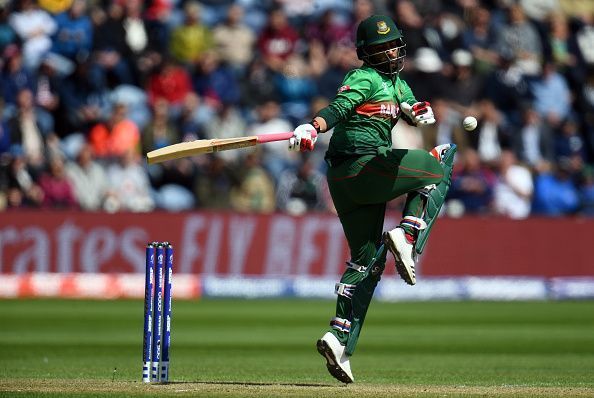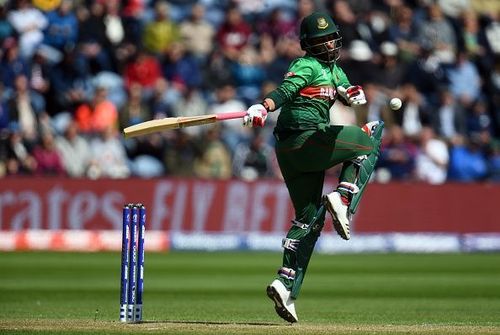
World Cup 2019: It’s time for Tamim Iqbal to bat at 3 while Soumya Sarkar and Liton Das open the innings

It’s always the plague that flowers the kaleidoscope. In the bitter darkness that consumes all hope, a spark of light is often enough to brighten the whole place up and make us see what we need to.
Epiphany. That’s when we have it.
That’s what happened to England when they lost to Bangladesh at Adelaide in the last World Cup and were knocked out by the Tigers.
‘The Bangladesh Tigers have knocked the England Lions out of the World Cup.’ These words from Nasser Hussain right after Rubel Hossain won the match for the Tigers still rings in the minds of many.
For England, it was haunting. It was the darkest place they could have been in. Someone had to light a candle, someone had to have an epiphany.
And someone did. After that defeat, Eoin Morgan, Trevor Bayliss and Andrew Strauss decided that things needed to change dramatically. Of course, during the bad times, things need to be changed for good times to come.
However, we often see that planning might be easy, but implementing the plan is much harder. England knew that they had to bring in new faces and change their playing style completely.
They knew they had to have conviction and faith in their new system and carry it out even if it failed in the initial stages.
From 2011 to 2015, England took part in 87 ODIs. In those matches, they only scored over 300 runs on 9 occasions and not once did they go over 350. On the other hand, since being knocked out of the 2015 World Cup, England have played in 93 ODIs and reached 300 or more runs on 41 occasions.
Forty-one.
England have made 300 or more runs 44% of the time they have batted. They also had four 400-plus scores and breached the 350-mark 17 times.
Breaking this down even further, England batted first 45 times since their 2015 World Cup exit till date, and were successfully able to score 300 or more runs on 28 occasions, which is an astonishing 62% of the time.
Prior to this, England won only 19 times out of the 46 times that they batted first. In comparison, since their 2015 WC exit, they have batted first 45 times and won 28 times in the process – which is a significant improvement from the earlier cycle.
All of this is just a testament to how England have successfully been able to implement their plans and are now reaping the rewards of it. Their batsmen attack no matter the situation and despite the fact that they lose on the odd occasion, they continue using their fearless approach in matches.
Now, after two losses on the trot, Bangladesh need to have an epiphany of their own.
While I am tempted to bring up the stats of Bangladesh in the same time frame, it would be unfair on the Tigers given that they play most of their games on the slow track of Mirpur.
The focus, instead, will be on players. Or, more specifically, on Tamim Iqbal.
Without a shadow of a doubt, Tamim Iqbal will go down as one of the greatest Bangladeshi batsmen of all time. If it weren’t for his poor form now, it wouldn’t have been a stretch to call him the best batsman for the Tigers.
However, there is a major problem with how he plays and that is holding the Tigers back.
Since Bangladesh’s exit from the 2015 World Cup, Tamim has averaged 54.68 in ODIs. That is simply outstanding. However, his strike-rate stands at 78.64 in that time-frame, which is only slightly more than his career strike-rate of 77.93
While batting first in that cycle, his average shoots up to 64.11 but his strike-rate drops down to 78.52.
In Dhaka, these are more than admirable numbers since the track is really hard to bat on. In England, however, the strike-rate is nothing but a disaster since starting out slow in English conditions during the powerplay is basically missing out on extra runs.
Tamim is one of the best batsmen in the world but he is certainly not the most aggressive. And it would be illogical to expect him to change the way he plays – especially considering how much success it has brought him.
And so, it all just comes down to one thing: a tweak in the team.

The way Tamim plays is perfect for an anchor-man at number three. Even though Shakib Al Hasan is in sublime form at one down, having Tamim at three gives Bangladesh an assurance even if they lose a wicket early.
With Tamim at three, Liton Das and Soumya Sarkar can open as they are naturally more attacking than the veteran southpaw. Sarkar has a strike-rate of 107.35 in the last year while Liton Das’ strike-rate stands at 85.68 in the same time-frame.
If these two open the innings for the Tigers and are able to give them a quick start on great batting decks, the task for the rest of the batsmen becomes a lot easier. In the worst case scenario, Tamim comes in early to anchor the innings.
This will also strengthen Bangladesh's middle-order with the presence of Mushfiqur Rahim, Shakib Al Hasan and Mahmudullah, who comes in at number 6 in any case.
It is quite astounding that Bangladesh have never tried Tamim at number three, even when they had a crisis in that position not so long ago. However, with the Tigers losing two matches on the trot and Tamim providing no significant contributions in any of the three games that the Tigers have played so far, it is perhaps time for the candle to be lit - and for the kaleidoscope to be flowered with a tweak in the line-up.
England transformed themselves by making a decision and sticking to it and it is time for Bangladesh to do the same.
On English soil, a fast start to the innings goes a long way – as we saw against South Africa – and with the pair of Liton Das and Soumya Sarkar opening and getting the license to do what they want, Bangladesh can make a strong comeback in the tournament.
And if things go wrong at the top, they will always have a Root-like stabilizing figure at number three in the form of Tamim Iqbal.
Also read - Most ducks in world cup
Follow Sportskeeda for all the updates on World cup points table 2019, news, live scores, World Cup schedule, most runs, most wickets and fantasy tips.